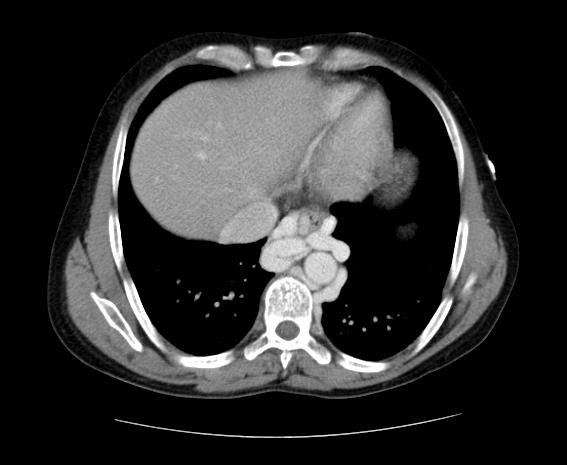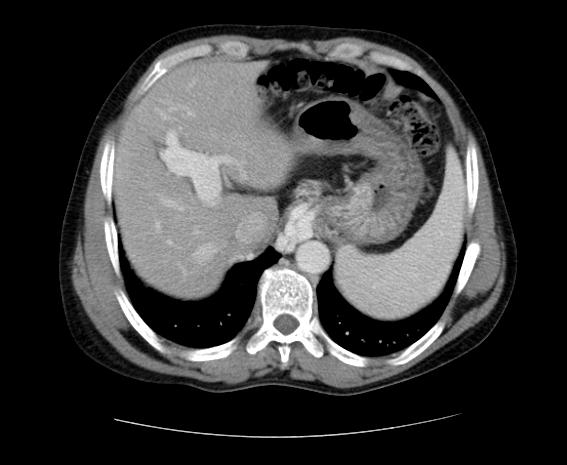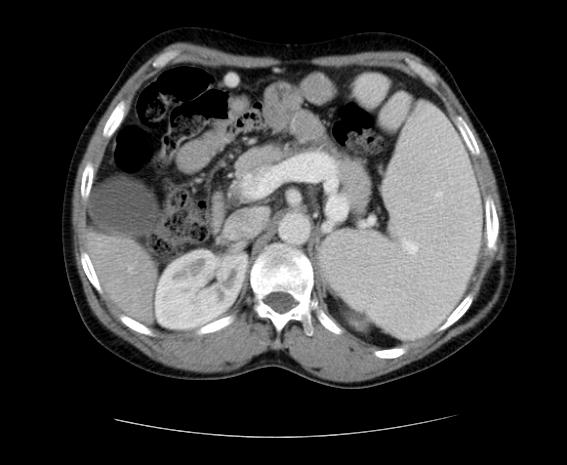Portal hypertension
| Portal hypertension | |
 | |
|---|---|
| The portal vein and its tributaries. |
|
Portal Hypertension Microchapters |
|
Diagnosis |
|---|
|
Treatment |
|
Case Studies |
|
Portal hypertension On the Web |
|
American Roentgen Ray Society Images of Portal hypertension |
Editor-In-Chief: C. Michael Gibson, M.S., M.D. [1],Assistant Editor-in-Chief: Soumya Sachdeva
Pathophysiology
Natural History and Complications
Diagnosis
Physical Examination
Abdomen
- Ascites (free fluid in the peritoneal cavity)
- Hepatic encephalopathy
- Splenomegaly (enlargement of the spleen) with consequent sequestration therein of red blood cells, white blood cells, and platelets, together leading to mild pancytopenia
- portacaval anastomoses (Esophageal varices, hemorrhoids, caput medusae), with esophageal varices posing an ongoing risk of life-threatening hemorrhage.[1]
Investigations
- Barim swallow - presence of varices is seen as filling defects(bag of worms appearnace)
- Upper gastrointestinal endoscopy - presence of cherry red spots.Very reliable
- Ultrasonography - to note the size of liver,spleen,poratl vein,splenic vein and to look for the presence of collaterals
- Hepatic venous pressure drainage measurement - Gold standard for measuring portal hypertension.If ore than 5 mmHg it is considered as significant
- Portal venography - patency and the calibre of portal vein and splenic vein , presence of collaterals
- Liver function tests for liver diseases
- Proctoscopy - rectal varices
- Barium enema - colonic varices
Patient #1
Patient #2: Recanalized umbilican vein
Treatment
Medical management
Treatment with a non-selective beta blocker is often commenced once portal hypertension has been diagnosed, and almost always if there has already been bleeding from esophageal varices. Typically, this is done with either propranolol or nadolol. The addition of a nitrate, such as isosorbide mononitrate, to the beta blocker is more effective than using beta blockers alone and may be the preferred regimen in those people with portal hypertension who have already experienced variceal bleeding. In acute or severe complications of the hypertension, such as bleeding varices, intravenous octreotide (a somatostatin analogue) or intravenous terlipressin (an antidiuretic hormone analogue) is commenced to decrease the portal pressure.
Percutaneous interventions
Transjugular intrahepatic portosystemic shunting is the creation of a connection between the portal and the venous system. As the pressure over the venous system is lower than over a hypertensive portal system, this would decrease the pressure over the portal system and a decreased risk of complications.
Surgical interventions
The most definitive treatment of portal hypertension is a liver transplant.
References
- ↑ Sailer, Christian, Wasner, Susanne. Differential Diagnosis Pocket. Hermosa Beach, CA: Borm Bruckmeir Publishing LLC, 2002:291
External links
Template:Gastroenterology de:Portale Hypertension sv:Portahypertension









